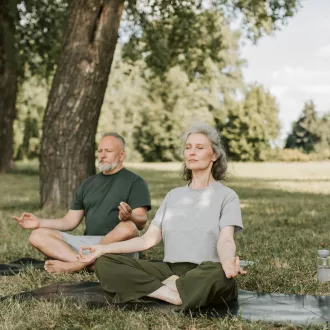Transcription Cognitive behavioral therapy (Cbt)
Psychology is one of the sciences that has contributed most to the development of coaching. One of the most widely used therapies today is cognitive behavioral therapy (CBT). This provides a set of techniques that are used in different fields, including coaching.
This therapy focuses on the relationship between the situation (stimulus) and the reaction (response) of the individual. On the behavioral side, it studies the behavior and the relationship established with the environment. In the cognitive part, the phenomena that are not observed, the mental processes that make us functional: sensations, thoughts, feelings, emotions, memory, and so on. With an integral approach where a change in one of the parts affects the other.
What is CBT used for?
It is used as psychotherapy in the treatment of people with difficulties or with an anxiety disorder, depression, sleep or obsessive-compulsive disorder, to deal with phobias, substance abuse, among many others. Its objective is that people modify their way of thinking in order to change their behavior and emotions. Currently these techniques are applied in various contexts with a high degree of effectiveness.
CBT offers means (principles and techniques) to learn how to deal with personal and professional situations in life. From a practical point of view, it helps the person to get to where he/she wants to be by overcoming self-imposed limitations. This is achieved by making the way of thinking more flexible and adapting to new situations.
Although in coaching clients focus on action, it is important that they become aware of the underlying cause of their behavior and learn to respond constructively to internal and external stimuli in order to bring about the desired change. That is why this therapy constitutes one of its main influences.
CBT and coaching
Coaching focuses on the achievement of very concrete objectives and many times people are their own worst enemy and sabotage themselves. It is necessary to change that behavior but for that the first thing is to know what triggers that thought, that emotion or that action in the first place.
How much our perception and the preconceived ideas we have of the world influence the results we get, the decisions we make or how we react. What is behind our behavior? Is it possible to re-educate ourselves and modify our behavior to have a more satisfying life?
The purpose of coaching is to improve the quality of life of the person, to achieve their goals, to learn to know themselves and to bring out their best version of themselves.
This is totally aligned with the objective of CBT in terms of being self-aware, finding the motivations that make us act differently and acquiring the skills to achieve well-being.
We can then say that it helps the client to:
- Overcome problems, both behavioral and emotional.
- Understand the origin of ideas, emotions and behaviors.
- Know and modify the beliefs that limit performance and cause stress.
- Establish more realistic and achievable goals.
- Develop strategies to successfully cope with the situations that arise.
Albert Ellis ABC Model
This model proposes that the way of responding to an event depends on the beliefs developed by the individual. Therefore, even if several people experience the same situation, they will have different ways of coping with it. This model has 3 steps:
- First: the event that affects the person is taken into account. It can occur inside the mind or be an external situation. The stimulus.
- Second: it takes into account everything that the person starts to process due to that stimulus: beliefs, thoughts, attitudes, attitudes, etc.
- Stimulus: beliefs, thoughts, attitudes and images. This belief system can be rational or irrational and brings strong emotions.
- Third: the consequences are taken into account, the behavior that manifests itself, both in behavior and emotional response.
- These steps can point us to possible causes, both in ourselves and in the environment. And recognize the thought patterns that may be hidden. The tricky part is identifying the real trigger. The belief that determines the interpretation of the event.
- A belief is an idea that is considered true but is a subjective truth that we use to relate to reality. They are ideas that have been established in our minds throughout life based on experience, upbringing and education. They move us to act and feel a certain way but we are rarely aware of the reason. This makes it more difficult to find out what is wrong with us, which is what undermines our overall well-being and confidence.
- When we discover what is limiting us, the belief that does not allow us to move forward, we must confront it. We must ask ourselves if what we think corresponds to reality, if it is useful or positive to continue on that path.
- If after the analysis it turns out that you have no proof of being right and those thoughts do not help you to reach the goal you set for yourself or to feel good about yourself, you should start working to change your though
cognitive therapy



